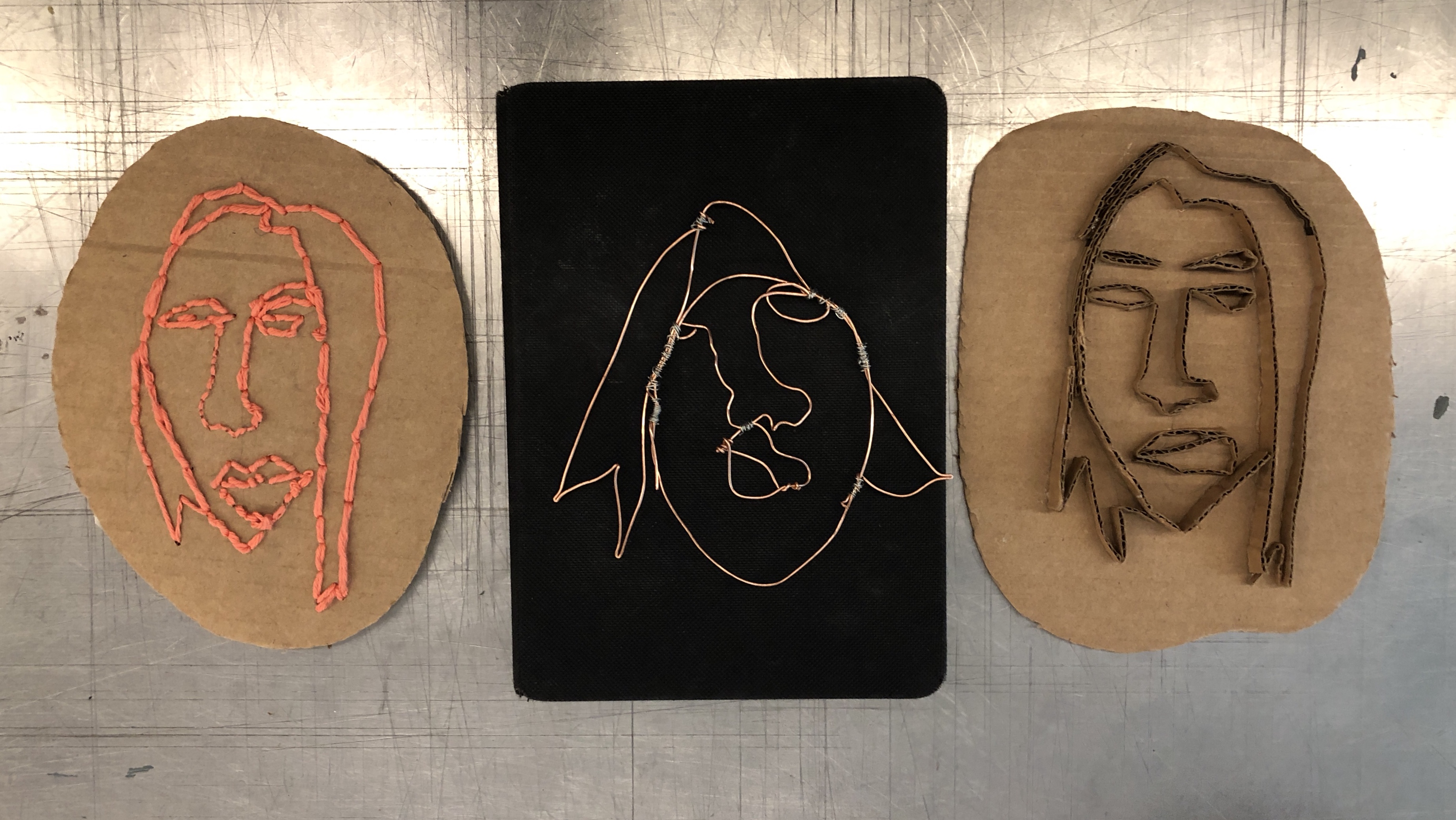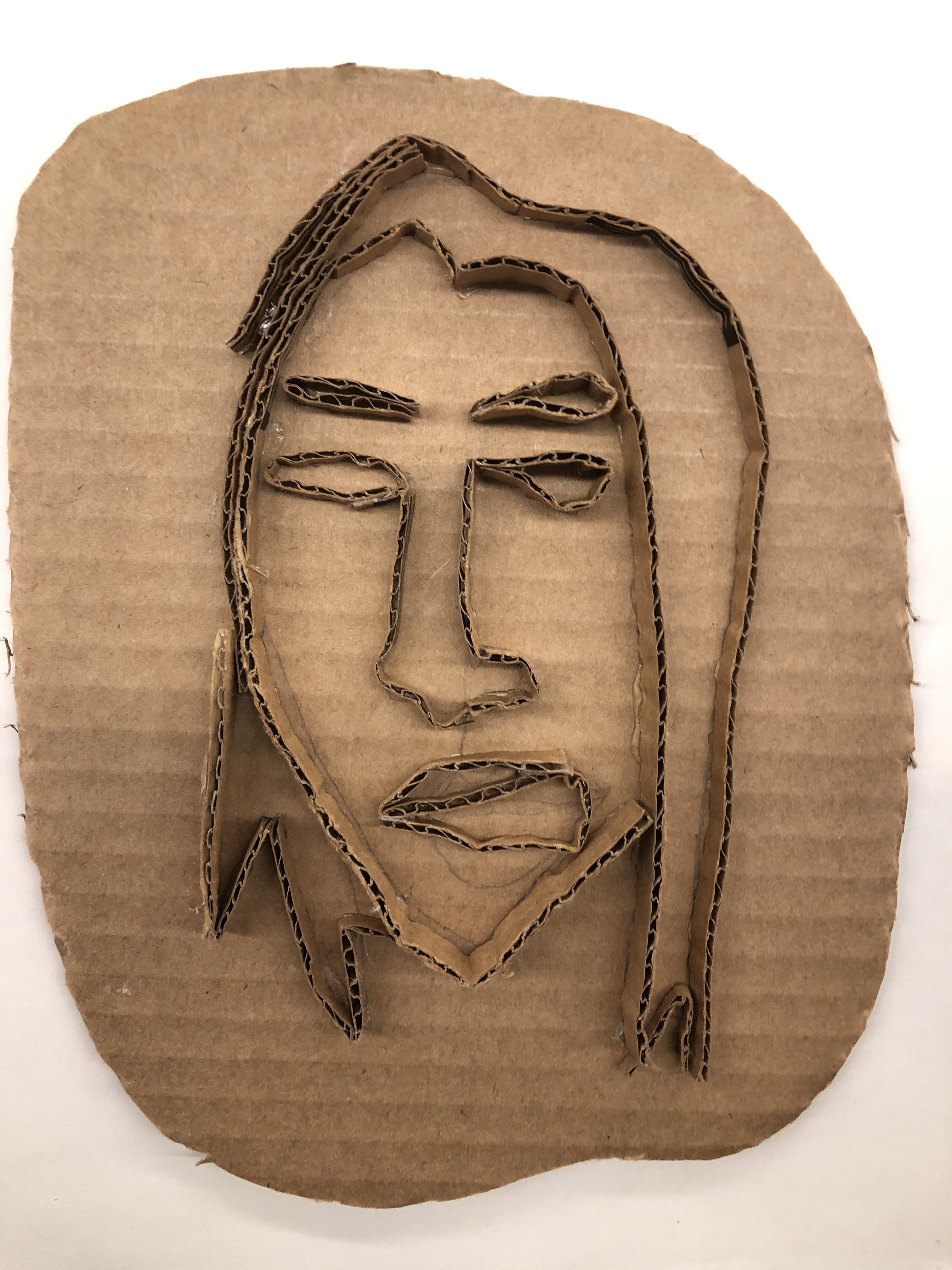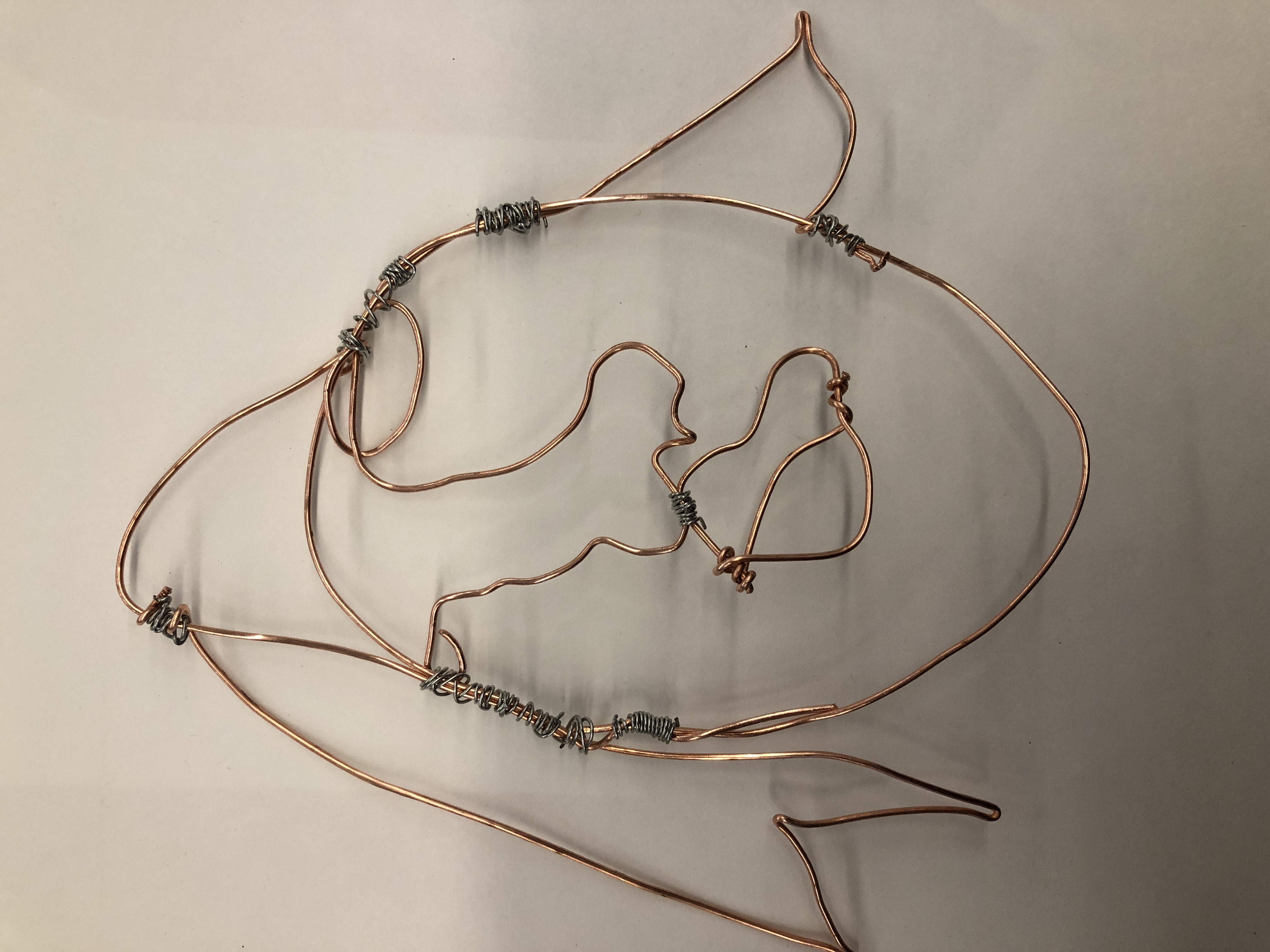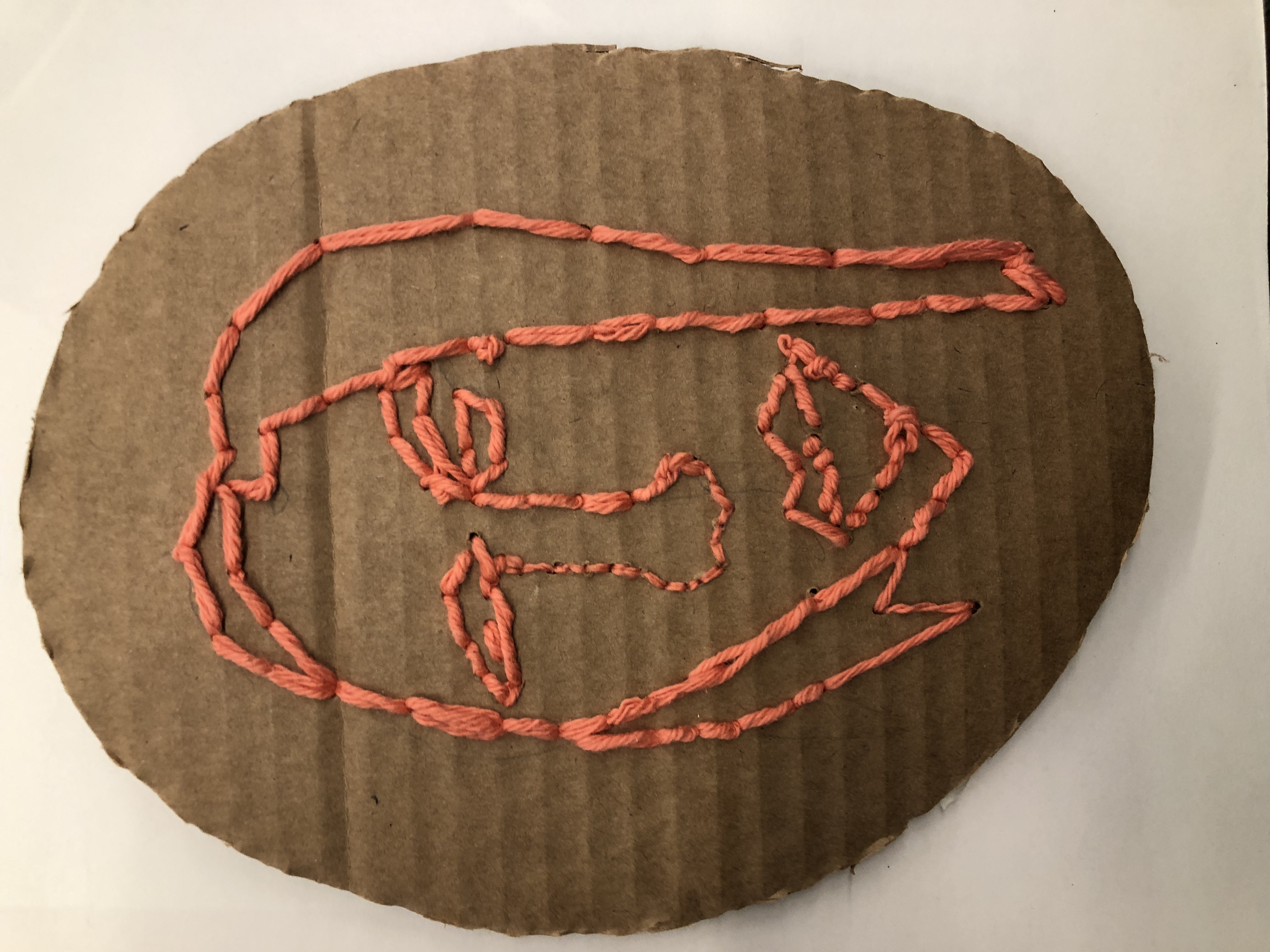 I am quite familiar with the contour line drawings in which Niels Kiene is so well known for. There is a satisfaction in drawing with a continuous line and only lifting the utensil when the piece is finished, because you don’t expect it to be photorealistic. There is an interesting, playful vibe that generates from this type of drawing style. The seemingly nonchalant product is admirable despite the pressure of having to complete the drawing in a single line.
I am quite familiar with the contour line drawings in which Niels Kiene is so well known for. There is a satisfaction in drawing with a continuous line and only lifting the utensil when the piece is finished, because you don’t expect it to be photorealistic. There is an interesting, playful vibe that generates from this type of drawing style. The seemingly nonchalant product is admirable despite the pressure of having to complete the drawing in a single line.
The three 3D self portraits began with a single, two dimensional drawing. I had done a contour line drawing but not all shapes were closed, and that was the first aspect I had to fix in order to turn it into a three dimensional piece. Unlike the two dimensional drawing, the three dimensional pieces could not be completed in one stroke. The yarn, cardboard and wire variations were more time consuming and had to be done in segments.
For the cardboard rendition of the drawing, I cut pieces of cardboard into thin strips and flattened it as much as I can. Cardboard is not as flexible as other material, so I had to cut it into several strips for a better maneuver. Sometimes, the cardboard strips would not hold the shape well so I had to put together several pieces to craft the exact curvature I wanted. The result was a bit rigid, in my opinion.
I completed the yarn self portrait by sewing yarn onto cardboard. I know the basics of hand sewing but never really bothered to sew on cardboard. Unlike the two dimensional contour line drawing, sewing has to be done in individual steps. I used the drawing to poke holes where I needed to follow with yarn for a better outline. I sort of just followed the trail with thread.
The wire was most difficult to maneuver in my opinion because I could never create lines that were as curved and rigid as I wanted. Wire can only withstand so much twisting, a lot of times I would damage the wire and it would be permanently bent.
Working with 3D materials is different from 2D in many ways, in aesthetic regards as well as process. It’s easier to get to the point with 2D material because you are in full control of the rigidity and curvature of your lines. Two dimensional work is done with direct hand to eye coordination, and 3D involves the flexibility of material on top of that. Despite using the same drawing as a reference for each rendition of the self portrait, aesthetic differences are very evident. It is obvious that some materials were more difficult to maneuver. However because the starting point was a contour line drawing, using these materials was much less stressful than if I were to turn a tedious two dimensional rendering into 3D.
3D CONTOUR LINE
- Posted on: January 31, 2018
- By: Victoria
- With: 0 Comments



